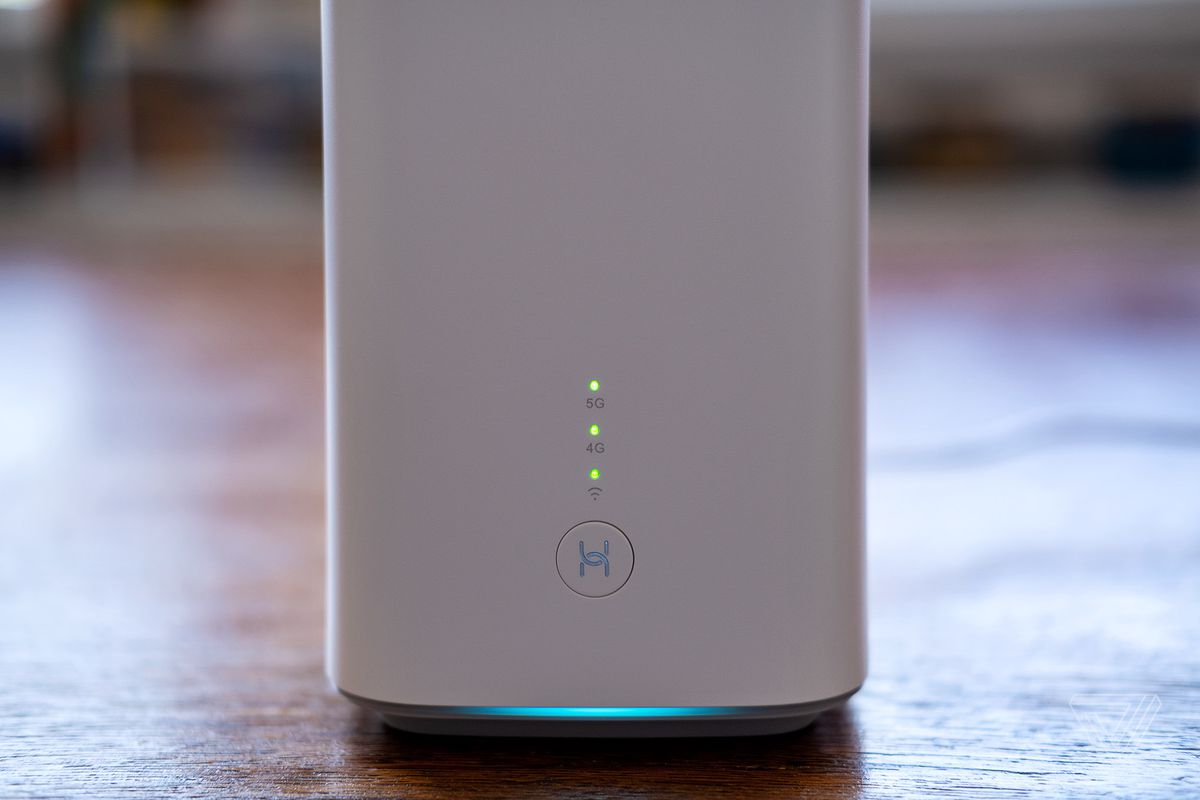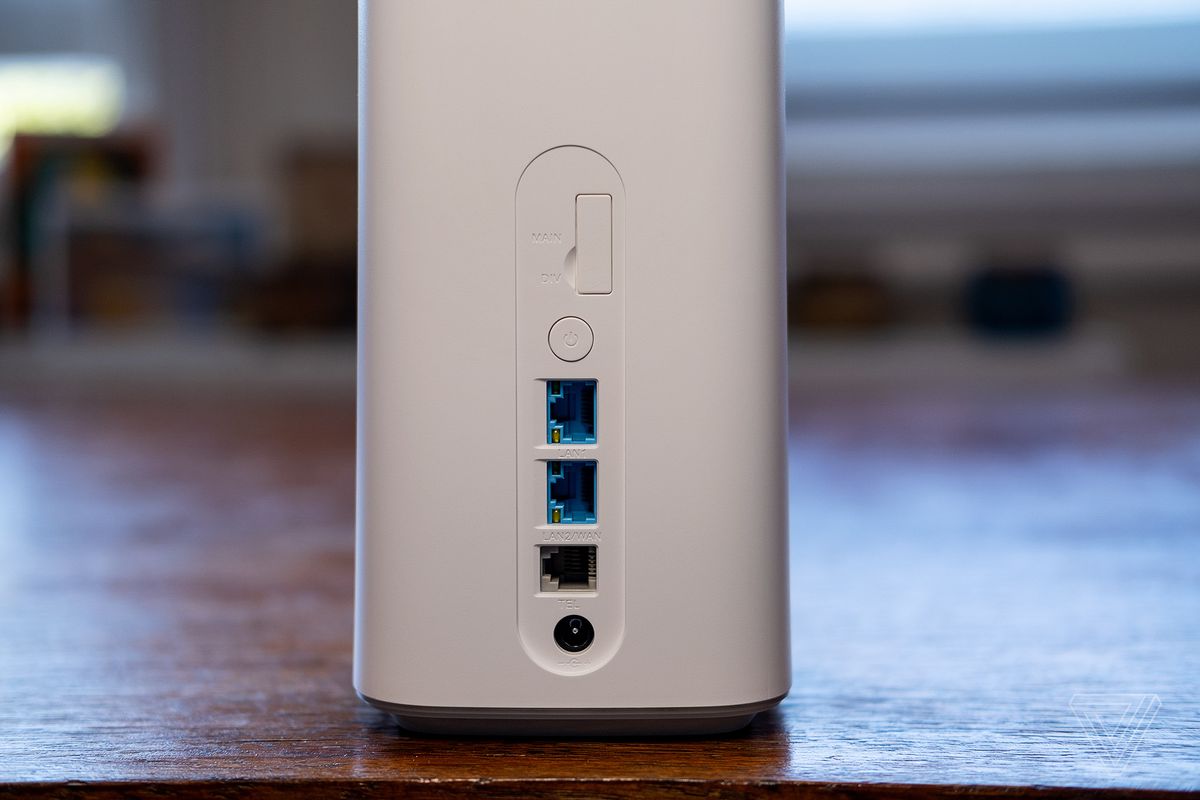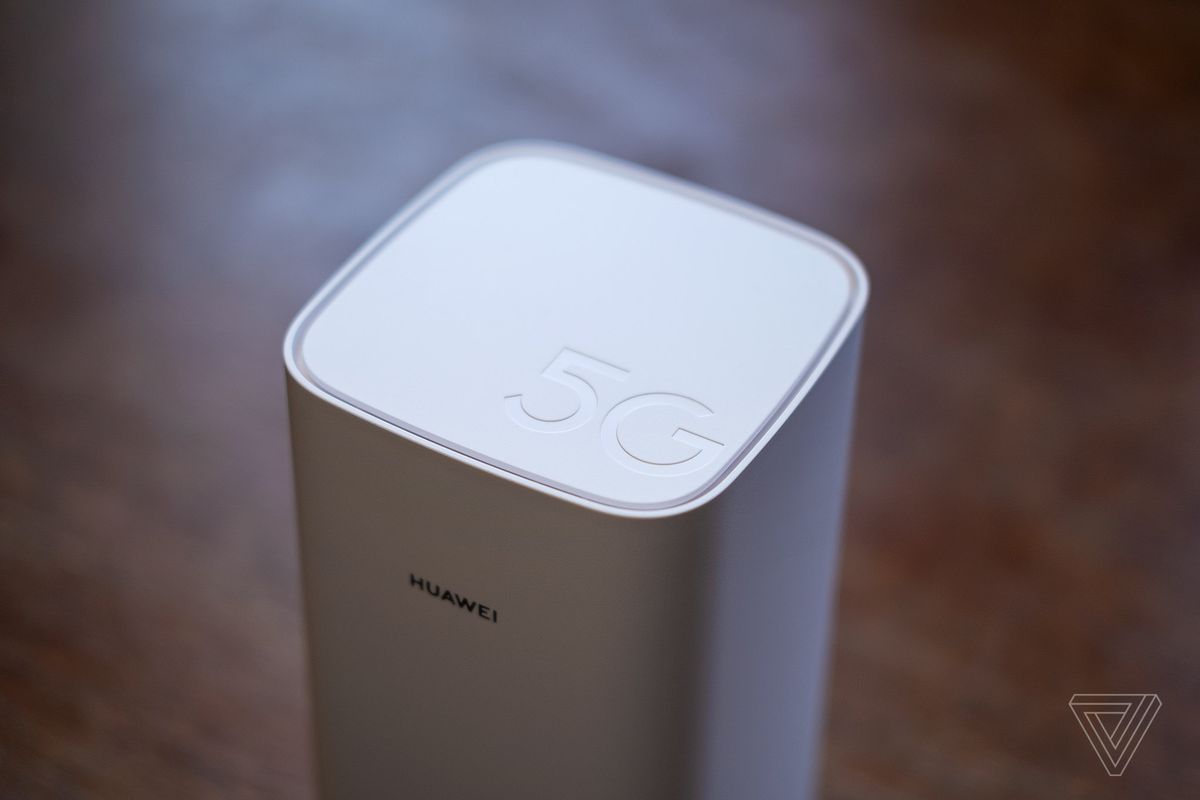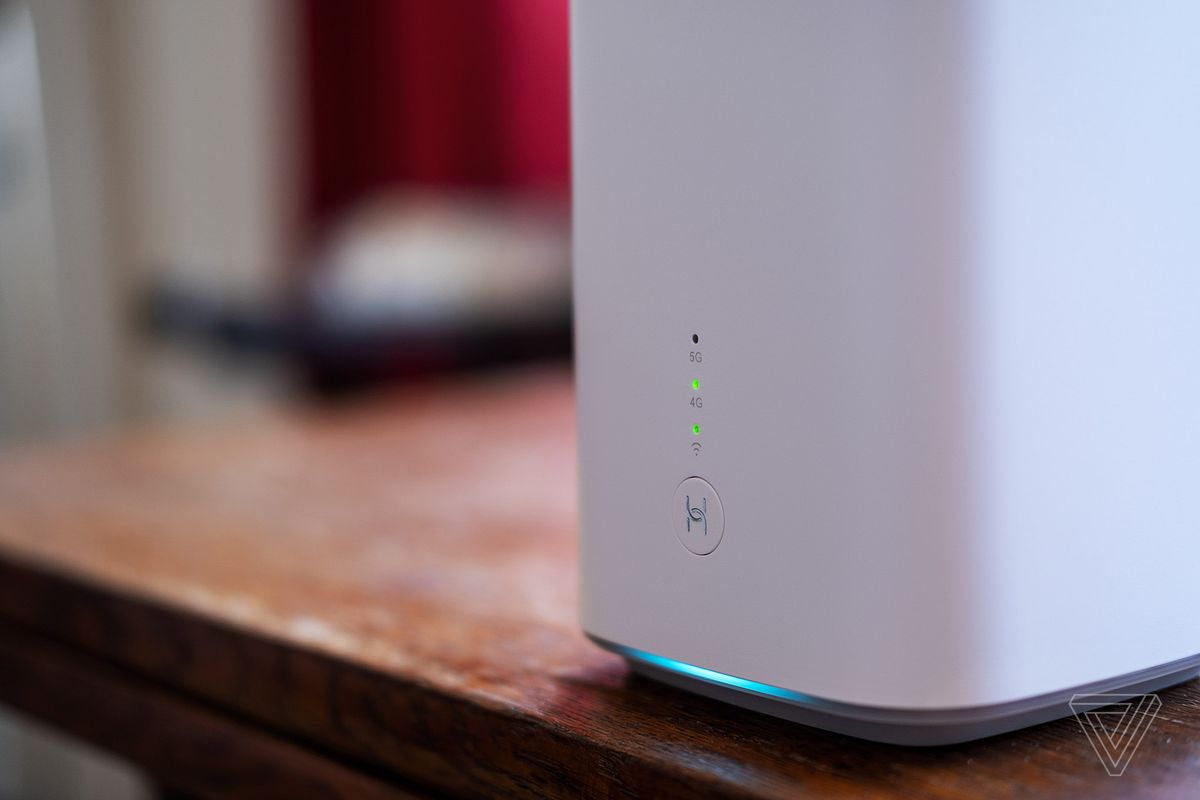Three UK’s 5G home broadband is super fast but inconsistent
…

Home Wi-Fi speeds can be difficult to understand at the best of times, but as I’ve been testing Three UK’s new 5G home broadband package this week, I’ve been getting especially superstitious. I’ve tried using different Wi-Fi access points, I’ve moved my modem around, and I’ve been switching between my phone, laptop, and desktop to run speed tests. I’ve even become pretty obsessive about checking which server Ookla’s SpeedTest service is accessing, just in case that’s coloring my results.
Three UK launched its 5G home broadband service on August 19th. While EE and Vodafone both focused their launches around mobile 5G devices (with their 5G broadband plans taking up a supporting role), Three is initially targeting replacing fixed-line internet with its 5G service.

It’s a different approach, but I think it makes a lot of sense while 5G is in its infancy. Not only does this approach handily avoid needing to include one of the massive batteries we’ve seen in the first generation of 5G phones, but it also means you’re likely to have much more immediate use for the kinds of speeds 5G can offer. You might be able to download huge files in seconds to your mobile phone, but most modern apps are designed to work over 4G, meaning the speed benefits of 5G are more marginal than they’ll eventually be. Home broadband is different because multiple people are using the same internet connection. Individual services might not be designed to fully take advantage of 5G, but you’ll feel a massive benefit if multiple people are using them simultaneously. You’re also more likely to want to stream things like 4K video at home than you are on mobile.
Three is starting small with its 5G rollout. At launch, the service is only live in select parts of London’s boroughs of Camden, Camberwell, and Southwark, but by the end of the year, the network hopes to offer 5G in 24 more locations. Again, the carrier is only promising to cover “parts of” these places, and it’s yet to detail exactly which parts these will be.
If you live in one of the small areas where Three is offering its service, you can subscribe to its 5G broadband service for £35 a month (around $42). That price covers the cost of Three’s 5G router, and it includes unlimited data, like most home broadband packages in the UK. In comparison, if you get an HTC 5G Hub from EE, then you can expect to pay either £50 a month for 50GB of internet or £75 a month for 100GB. Vodafone offers the same unlimited data allowance as Three, but you’ll have to pay £50 a month for it, and Vodafone is advertising this price as an introductory offer.
My setup process for the router was a little bit different from what the average customer will experience because Three sent an engineer to my house to set up the router and find the best location in my apartment for it. However, regular customers will simply receive the company’s Huawei 5G CPE Pro modem / router to set up for themselves. The company’s 5G marketing proudly states that its service is “No Engineer. No Fuss.,” so I guess they managed one out of the two with me.
Depending on the coverage in your area, this may or may not be a problem. Whether it’s because the 5G network had launched that day or because I live right on the edge of one of the London boroughs that Three’s 5G network covers, it took some time for the engineer to find a suitable location for the hub in my apartment. First, we tried placing it on a table in my living room. Then, we tried moving it upstairs to my bedroom. Eventually, we settled on a bookshelf downstairs in my living room. This appeared to give it just enough elevation to maintain a decent 5G signal, and it also kept it nicely out of the way. This is the kind of troubleshooting I would have been happy to do by myself, but your mileage may vary. There’s a small light on the hub that illuminates when it has a 5G connection, so you can use this along with speed test services to find the best place for it in your home.

Overall, I liked the Huawei 5G router Three supplied. Although it was a fairly tall device, its footprint on my bookshelf was very small, and it was easier to find a place for it than my current carrier-provided modem because it didn’t need to be located where the hardwire line enters my home. It also had a clean and simple online interface to change basic settings about the router. Despite the UK’s continued indecision about whether to allow Huawei to supply equipment to build the country’s 5G infrastructure, it seems like carriers themselves have decided collectively to offer its consumer hardware. EE and Vodafone both now sell the Huawei Mate 20 X 5G, after initially indicating they would not carry the company’s phones. Vodafone sells the same Huawei 5G router as Three, but it brands it as its Gigacube.
The router is a little square tower, with a trio of lights on the front to show when its 5G, 4G, and Wi-Fi connections are active. There is a pair of Ethernet ports on the back if you want to use a wired connection as well as a telephone port if you’re feeling a little more old fashioned. If you’re going wireless, then the router I was provided with supports the latest Wi-Fi 6 standard, according to Huawei’s specs page, and it auto-selects between broadcasting over 2.4GHz and 5GHz. If this causes any issues for your devices, then you can change this setting through the router’s web interface (where you’ll also be able to change your default password and Wi-Fi access credentials).
Of course, the most important aspect of upgrading to 5G is the speeds. Over my week with the device, I found that these varied a lot, sometimes even within the space of 15 minutes. At first, when I had the 5G hub downstairs where the engineer had left it, I thought that the inconsistencies were due to me using different speed testing services on different devices. I’d get a respectable 200 Mbps download when I accessed Ookla’s SpeedTest from my phone, but then I’d get just 26 Mbps download from my laptop. I got a download speed of 150 Mbps when I tried to access Fast.com from my phone, but this quickly dropped to 117 Mbps before rising to 190 Mbps while using Ookla’s SpeedTest. Speeds were fast on average (and the 5G indicator light stayed on throughout each of these tests) but exactly how fast it was varied a lot.
Next, I tried integrating the 5G hub into my Netgear Orbi Wi-Fi mesh setup, and I ran some speed tests using a desktop computer plugged into one of the mesh network’s satellites. I found that the 5G hub integrated seamlessly with my Netgear Orbi setup, without the need for me to reconfigure anything. (It helped that I already had my Orbi set up in access point mode from my previous setup.)

At this point, I learned how much of an impact Ookla’s different SpeedTest servers can have on the speeds reported. My desktop got 274 Mbps download and 12 Mbps upload using one server, but speeds jumped to 423 Mbps download and 35 Mbps upload using another, despite SpeedTest indicating that they were the same distance away from me and their ping being identical. Swapping back to the first provider saw speeds drop even further to 208 Mbps download and 43 Mbps upload. (These speeds suggest that Three is using a 4G connection for upload data, but the company did not respond to my questions by the time of publication.)
Next, I tried to find a place in my apartment that could offer more consistent speeds. The Open Signal app, which shows cell towers that are nearby, doesn’t seem to have been updated with information about 5G, but looking at it suggested that the closest 5G cell tower might be behind my apartment. I also live quite close to an elevated train line, which I thought could be getting in the way of the 5G signal.
To try to solve both of these issues, I moved the hub to the top of a bookcase at the rear of my apartment to give it a more or less direct line of sight to the cell tower I had in mind. After a couple of truly disastrous sub-20 Mbps tests, speeds quickly shot up to between 100 and 200 Mbps down. Even now, as I was using the same server for every single test, speeds would vacillate by as much as 50Mbps between speed readings taken just 10 minutes apart.
Although the router’s 5G light stayed resolutely illuminated throughout all of these tests, the actual speeds I got varied a lot. Averaging out the two dozen speed tests I ran throughout the week left me with an average speed of around 215 Mbps, with a peak of 428 Mbps on Monday at 9:30PM. Three’s website claims that I should get an average of 200 Mbps in my location, and my tests throughout the week seem to support this claim.
It’s difficult to know how much of this variation can be blamed on the fact that I was using the 5G network the week it launched. Three’s coverage area is currently limited, and I appear to be right on its edge.
Synthetic tests aside, the speeds I was getting in real-world usage were good. I was able to download games from Steam at around 36MB/s (288 Mbps) compared to the 4.7MB/s (37.6 Mbps) I was getting on my previous 37 Mbps fiber-to-the-cabinet connection from Vodafone. Then, when I wanted to play a game, the performance seemed unaffected by being connected to mobile data. I experienced latency of around 34ms while playing Overwatch, which is the same as what I usually get from my fixed-line connection. When I tried to stream a 4K movie over Netflix to my Samsung TV, the stream took around 50 seconds to buffer enough to switch to a 2160p (4K) feed. This wasn’t an improvement over what I could get from my existing fixed-line internet, but the difference meant I was able to get this high speed without having to pause a Steam download on my PC first. Yes, 5G is faster, but for me, most of the benefits were doing more things simultaneously, rather than doing one thing especially quickly.

Perhaps most importantly, I didn’t get a single complaint from my housemates about the switch to 5G internet. Once I had the hub connected to my existing Netgear Orbi system, my two housemates were able to connect to it as though nothing had changed. There are definitely heavier internet users out there, but we didn’t experience any slowdown while we gamed, streamed video, and browsed the web simultaneously.
Three’s flat rate of £35 a month compares well to what other fixed-line providers are offering in my area. If I went with Virgin Media’s fiber service, then I could get a top speed of 54M bps for £37 a month, while other providers that use the BT Openreach network were offering 67 Mbps with prices starting at £30. Meanwhile, if I wanted to get similar speeds to what Three’s 5G service gave me, then I’d have to pay Virgin Media £47 or £52 a month for a 200 Mbps or 350 Mbps service, respectively. The actual speed you’ll get from these services may also vary depending on any number of factors, and I’m also not lucky enough to live somewhere with a provider that offers an ultra-fast fiber-to-the-home connection like my colleague Tom Warren.
It would be impossible for me to give a definitive recommendation about Three’s 5G home broadband based on the single week I spent with the service. The network is brand-new, speeds are inconsistent, and coverage is sparse. I also don’t know what impact more people using the service will have on network speeds or how they’ll change as Three continues to build out its coverage.
Ultimately, while the speeds I was getting were varying from minute to minute, on average, they were still a lot higher than what I can get from competing fixed-line service providers in my area at the same price. If Three is able to maintain these sorts of speeds as more people connect their homes to its network, then it could offer a great value alternative to existing high-speed fixed-line providers.
Photography by Jon Porter / The Verge
Vox Media has affiliate partnerships. These do not influence editorial content, though Vox Media may earn commissions for products purchased via affiliate links. For more information, see our ethics policy.